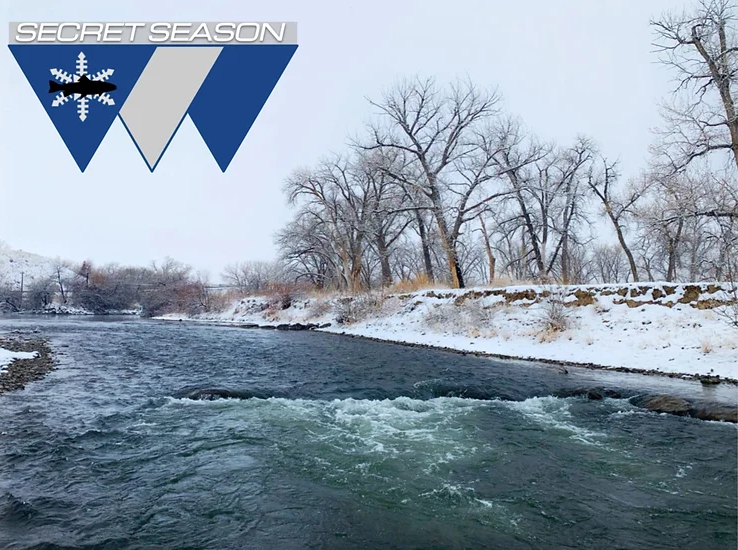Winter Nymphing: The Dropshot Rig
Fly fishing for winter trout is all about low and slow. Implement the dropshot rig to nymph more effectively with midges and bwos during the secret season. These tactics work great whether euro-nymphing or indicator nymphing.

December 2022
Low and slow is the name of the game during winter months when we focus on dredging the bottom of the river with midges and BWOs. But on those select days when fish just aren't playing along, I've long held the suspicion that most anglers, me included, aren't getting their nymphs deep enough. On warmer days fish are relatively active and many anglers don't struggle to catch fish. Therefore they might not consider that their flies aren't deep enough to reach the bottom. But, when fish tuck deep on the bottom and refuse to move for flies during winter, that same rig that worked during the warmer season suddenly falls short. I've seen it first hand, and seen it plague anglers on bitter cold days. This has lead me away from the standard nymphing approach, and I am now thoroughly convinced that the standard western approach to nymphing is not the best approach to winter nymphing.
The Standard Nymphing Rig
The standard indicator approach is easy enough in theory. Start with a tapered leader, Thingamabobber and chain of flies tied together from hook bend to hook eye. Then, incrementally add split shot above your top fly, and throw large mends to slow your presentation.
Once that cast is presented and those flies sink, do you have a good understanding of fly depth as it drifts? We all assume it drops right under your indicator. Not necessarily. The thick diameter on the butt section of a tapered leader resists sinking more than the thin tip, and as a result your flies pull off the bottom. The drag in the butt section catches more of the river's current and causes drag, altering how your flies drift. Think of it like a wind sail. But you can't always just add split shot after split shot to alleviate the issue. With the standard rig, too much and you'll be picking off grime stuck to your flies after each cast as they bounce along the river bottom. Plus, during winter, the less tinkering you do to your rig, the warmer you'll be. As an alternative, you could add lots of weight and shorten the length between your flies and your indicator... but then you run the risk of fishing too shallow in deeper runs, and that excessive weight causes your presentation to drift unnaturally. This is where a dropshot rig could help. I think it's under-appreciated and offers something to both euronymphers and indicator nymphers.


